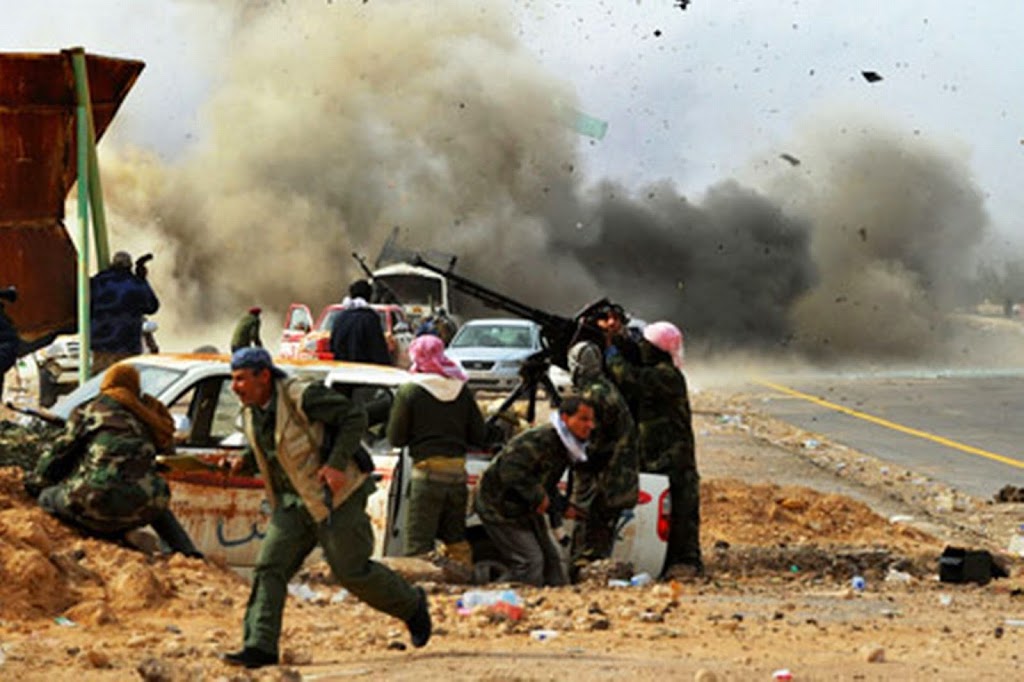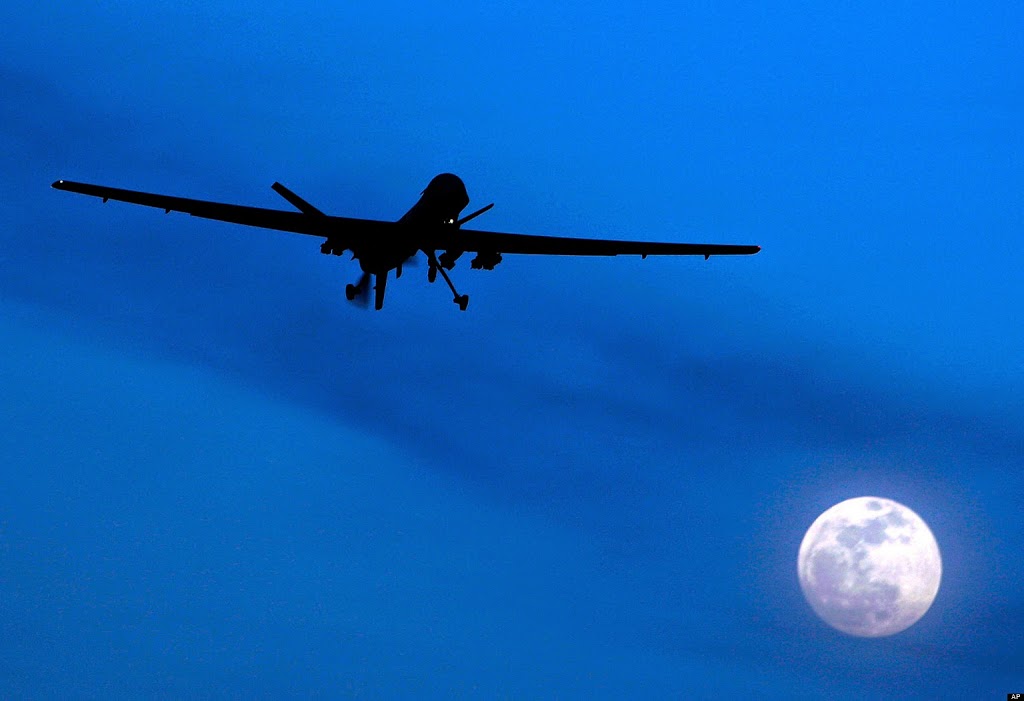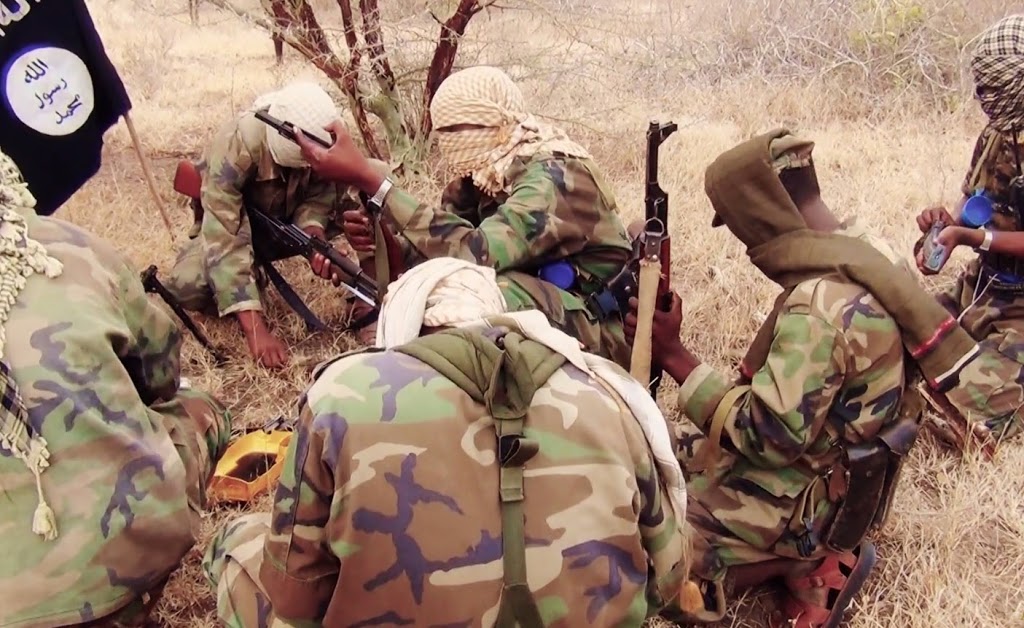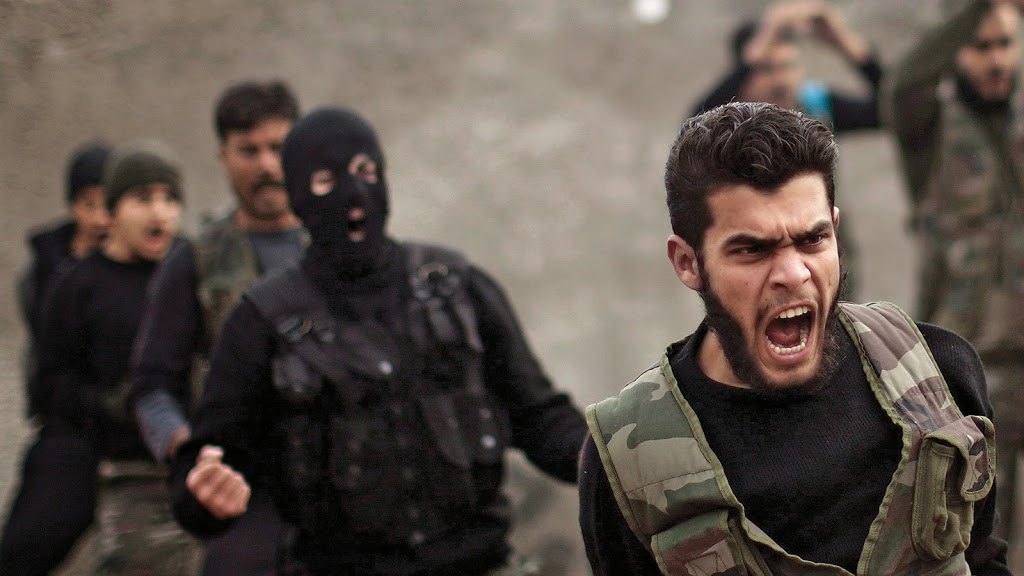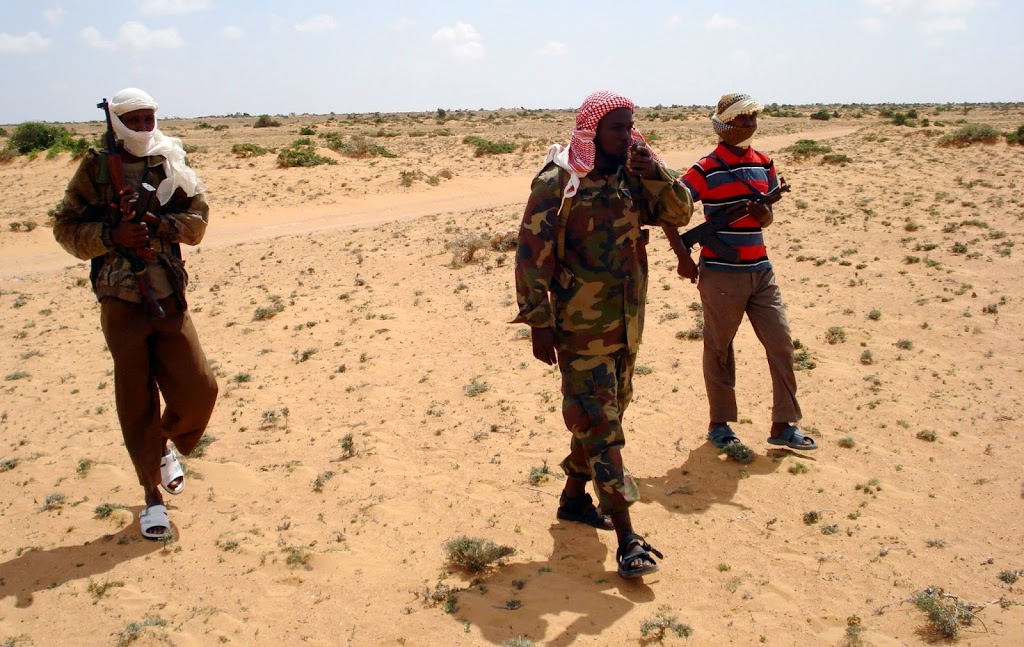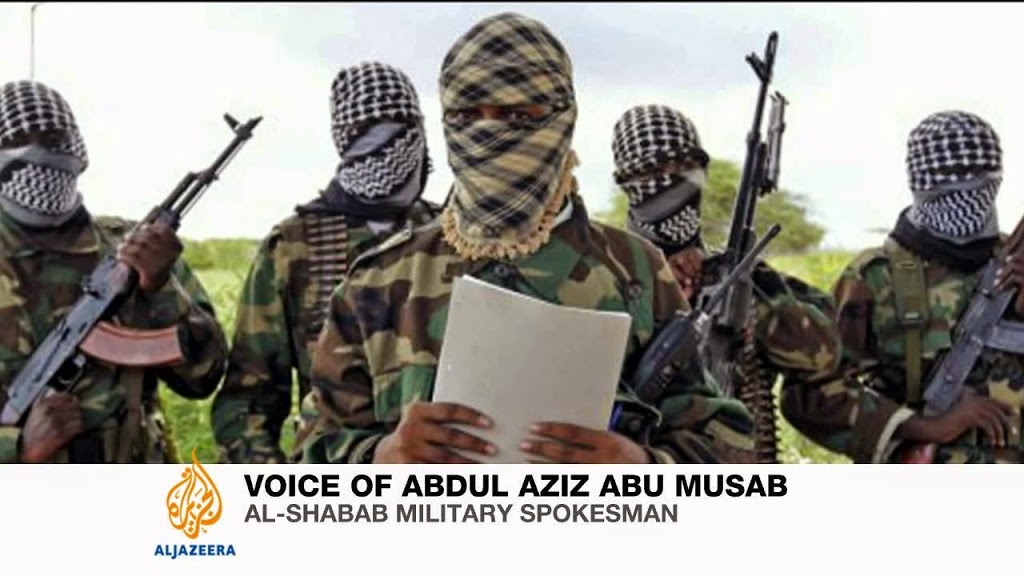Al-Shabaab leader killed in US airstrike
An unmanned US aircraft that unleashed Hellfire missiles at a vehicle in Somalia earlier this week killed a leader of the al- Shabaab militant group.
Rear Admiral John Kirby, the Pentagon press secretary, confirmed the strike in a twitter post.
He said the department could now “confirm that Tahliil Abdishakur, chief of al-Shabaab’s intelligence and security wing, was killed in a US air strike in Somalia on 29 December.”
The Pentagon said in a statement that Abdishakur was responsible for the group’s external operations and “his death will significantly impact al-Shabaab’s ability to conduct attacks against the government of the Federal Republic ofSomalia, the Somali people and US allies and interests.”
The strike took place on Monday in the vicinity of Saakow, Somalia, by US forces using an unmanned aircraft that fired several Hellfire missiles at a vehicle carrying the al-Shabaab leader, the statement said.
US and Somali officials speaking on condition of anonymity confirmed Abdishakur’s death yesterday but the Pentagon had said it was still examining the evidence.
Today’s statement was the first official confirmation of the killing from the Pentagon and offered the first details on the nature of the strike.
Somalia’s National Intelligence and Security Agency said that Abdishakur was head of al-Shabaab’s Amniyat unit, which was believed to be responsible for several suicide attacks in Mogadishu.
Officials have said Abdishakur and another al-Shabaab militant were killed in the attack. They have said there were no civilian casualties in the air strike.
The strike was the latest in an ongoing campaign against al-Shabaab, whose leadership is affiliated with al Qaeda.
In September, a US drone strike killed the group’s main leader, Ahmed Abdi Godane.
Source: RTE
The Shabaab’s AMISOM base attack proves its endurance, capability
The Shabaab al-Mujahideen Movement has proven to be resilient following the death of Mukhtar Abu al-Zubeir (AKA Ahmed Abdi Godane), largely putting to rest statements from Washington that the group had been diminished.
The group’s December 25 raid on the AMISOM Halane military base near Mogadishu International Airport, a heavily protected compound housing officials from the UN and other agencies, marks a new militaristic achievement for the group inside of Somalia. The attack reveals not only feeble security and intel of forces in Somalia, but also that the Shabaab maintains an ever-threatening level military capability.
The group issued an official statement on the raid through Shabaab-affiliated websites on December 26, a day after the Shabaab’s spokesman, Ali Mahmoud Ragi (AKA Ali Dheere), claimed credit for the attack and alleged to have killed at least 17 “crusaders.” The message also boasted to have breached the “seemingly impenetrable fortifications” of the base, following up:
Particularly troubling about the Shabaab’s siege is its indication of the African Union (AU) and UN’s lack of security and preparation for such an attack, as well as a grim indication of sturdy intel and military ability retained by the Shabaab. The militants managed to breach the base (some of whom allegedly doing so while wearing Somali National Army uniforms) during the compound’s lunch hour and shared hours of gunfire with AMISOM forces, after which two Shabaab fighters allegedly detonated themselves on-site.
It almost seems that the group’s attack on of the Westgate shopping mall in Nairobi, Kenya in September of 2013—wherein Shabaab militants opened fire on unsuspecting shoppers—had distracted the international community from the group’s militaristic aspirations. Sure, this attack at Westgate, while showing a willingness toward brutality, demonstrated little militaristic capability. However, Thursday’s attack on the AMISOM Halane military base stands as sobering proof that that this terrorist organization is a danger not only to civilians, but also to domestic security forces.
The aforementioned statement by the Shabaab regarding their attack on the base also claimed the attack to be one of revenge for the death of Godane, who was killed in a U.S. airstrike on September 2.
Unfortunately, though, this attack has served as more than retaliation; the Shabaab’s recent siege of the base is a reminder that killing the leaders does little to diminish a terrorist organization’s activity—let alone end it.
Source: siteintelgroup
Senior Shebaab leader surrenders in Somalia
A leader with the Islamic extremist group al-Shabaab, who had a $3m bounty on his head, surrendered in Somalia, a Somali intelligence official said on Saturday.
Zakariya Ismail Ahmed Hersi surrendered to Somali police in the Gedo region, said the intelligence officer, who insisted on anonymity because he is not authorised to speak to the press.
Hersi may have surrendered because he fell out with those loyal to Ahmed Abdi Godane, al-Shabaab’s top leader who was killed in a US airstrike earlier this year, the officer said.
Hersi was one of eight top al-Shabaab officials whom the Obama administration offered a total $33m in rewards for information leading to their capture in 2012.
Despite suffering major losses such as losing major cities, al-Shabaab remains a threat in Somalia and the East African region. The group has carried out many terror attacks in Somalia and some in neighbouring countries including Kenya, whose armies are part of the African Union troops bolstering Somalia’s weak UN- backed government.
On Christmas day, al-Shabaab launched an attack at the African Union base in Mogadishu. Nine people died, including three African Union soldiers, in the attack on the complex, which also houses UN offices and western embassies. Al-Shabaab said the attack was aimed at a Christmas party and was in retaliation for the killing of the group’s leader Godane.
Al-Shabaab also claimed that 14 soldiers were killed, but the group often exaggerates the number of people it kills.
Al-Shabaab is waging an Islamic insurgency against Somalia’s government that is attempting to rebuild the country after decades of conflict that was sparked off by the 1991 ouster of dictator Siad Barre.
Source: news24
Nine Killed in Al-Shabab attack on African Union base in Somalia
Three African Union (AU) soldiers, a civilian contractor and five al-Shabab militants were killed during a militant attack on the main AU base in Mogadishu, Somalia. The Islamists launched the attack during a Christmas day lunch hour on December 25.
Five militants were killed and three captured during an al-Shabab attack on the key base of the African Union Mission in Somalia (AMISOM) located in the capital of Mogadishu, AMISOM said in a statement.
“Our forces shot dead three of them, two detonated themselves near a fuel depot,” Col. Ali Aden Houmed said, as quoted by the Associated Press. “An investigation is underway on how they entered the base,” he added.
Three AMISOM soldiers and a civilian were killed in the fighting.
At least eight al-Shabab militants, some of whom were wearing uniforms of the Somali National Army, launched the attack during a Christmas day lunch hour, according to the New York Times. The Islamists were allegedly targeting a Christmas party at the Halane base, the media outlet said.
The African Union condemned the attack.
Wave of bombings, shooting kill two in Yemen’s Sanaa
Two were killed Tuesday in the Yemeni capital, where many supporters of the Houthi movement live, in a series of small bomb attacks and a drive-by shooting, a medic and witnesses said.
One of the bombs was placed near the home of Ismail al-Wazir, a professor at Sanaa University, state news agency Saba quoted the director general of the Sanaa police, Brigadier General Abdelrazzaq al-Mo’ayad, as saying.
Wazir, who is close to the Houthi group, escaped an assassination attempt in April when gunmen opened fire on his vehicle, killing two of his security guards.
No one has claimed responsibility for the April attack or Tuesday’s bombings, but the Houthis have been fighting the al-Qaeda and allied tribesmen since its gunmen took control of Sanaa in September and forced the resignation of a government they had long accused of corruption.
The blasts occurred early in the morning when only a few people were on the streets, witnesses said. One said he saw a man on a motorbike place the bomb outside his house and it exploded almost immediately.
Another bomb exploded when a member of the Popular Committees, a local force set up by the Houthis after they captured Sanaa, was trying to dismantle it, police said.
Several houses and some cars were damaged from the explosions.
In a separate attack on Tuesday, a prominent Houthi figure, Faisal Sherif, was shot dead by two gunmen riding a motorcycle near the University of Sanaa, witnesses and a Houthi source said.
The instability in Yemen has raised fears that the country, next to oil-rich Saudi Arabia and key shipping routes from the Suez Canal to the Gulf, could become a failed state along the lines of Somalia.
Yemen has been in turmoil since mass protests in 2011 forced long-ruling President Ali Abdullah Saleh to step down.
Source: al-akhbar
Year-end: Rise of ISIS in 2014, new target for US’s counter-terrorism strategies
The fundamental goal of the US strikes on the Islamic State of Iraq and Syria (ISIS) is to control the turbulent situation in the Middle East. Since 2011, the US has implemented strategies to fight against terrorism, and ISIS in particular, based upon the following factors:
Threats exposed by terrorist activities in the US
In 2009, Yemeni terrorists launched an attack on US soil, so the US supported Yemen’s Hadi government to eliminate terrorism and conducted continuous drone strikes in the country. But it did not actively seek to prevent terrorist activities that did not pose a direct threat to US security, including terrorist activities in Libya, Iraq and Syria — before June 2014.
Changes in regional situations and in the US leadership in the region
For the purpose of stabilizing and controlling the regional situation while attacking any disobedient regime and consolidating its leadership, the US — with the help of anti-government forces — overturned the Gaddafi regime in Libya and Assad regime in Syria, and exerted pressure on the disobedient Maliki government in Iraq.
Containing the influence of other powers in the region
The US has been maintaining “controllable chaos” in West Asia and North Africa since the turbulence increased in the regions. It encourages public protests in some countries to weaken the authority of the governments but maintains the ability to “control” opposition forces and political situations at critical moments.
It allows terrorists and other criminal forces to participate in anti-government activities to create political chaos and terror, but maintains the ability to strike against terrorism wherever and whenever it sees fit.
The US has been trying to create in the region “chaos” that can only be controlled by itself and conforms to its interests, such as establishing pro-US regimes, so as to expel or contain the influence of other powers in the region and use West Asia and North Africa as pivot points to maintain its global hegemony.
Since turmoil intensified in those regions in 2011, the US has taken three major measures to counter terrorism, which have been adjusted and applied in the strikes against ISIS.
Drone attacks and airstrikes
The US uses drones to strike terrorists, especially those in Yemen and Somalia, and has killed some key leaders of the terrorist groups. And the US has used drone attacks and airstrikes against ISIS.
The US highlighted airstrikes while announcing its strategy to fight against ISIS on September 11, 2014. Compared with drone attacks, airstrikes have greater scope, intensity and frequency. Both rely on the advantages of the US in technology and air dominance, with which the US can avoid casualties while striking against terrorists.
Supporting the local ground forces to counter terrorism
Since withdrawing troops from Iraq in 2011, the US has supported local and international forces to strike against terrorists there; it supports Yemen’s Hadi to crack down on terrorist activities; it supports Uganda, Kenya and Ethiopia to dispatch troops to expel the Somali Youth League; it also supports Algeria to play an important role in the regional fight against terrorism.
In October 2012 and April 2014, the US Secretary of State visited Algeria to discuss international cooperation on counter-terrorism in the region.
For the strategy against ISIS, the US focuses on maintaining the stability of the Iraqi government, training the anti-government forces of Syria and assisting the Kurdish forces to strike against ISIS on the ground.
Motivating the international counter-terrorism force
The US relies on the UN to impose sanctions on terrorist groups and depends on its allies to carry out airstrikes and ground activities.
It promotes a “peaceful” transition in Yemen through the UN to strengthen the counter-terrorism capability of the Yemeni government, and with the help of the UN, it propels the forces from African countries to strike against terrorism in Somalia.
For strikes against ISIS, the US draws NATO, Saudi Arabia and Turkey to carry out airstrikes, and actively urges its allies to cut the fund chain of ISIS.
Compared with the Afghan War, launched in October 2001, and the Iraq War in March 2003, the US counter-terrorism measures, since 2011, have revealed different characteristics.
Obama’s counter-terrorism strategy is markedly different from that of his predecessor: George W. Bush used counter-terrorism to advance regional transformation and consolidate the US’s regional leadership; Obama seeks to control the changing situations in West Asia and North Africa and maintain the US leadership to promote counter-terrorism activities.
Source: cntv.cn
EU announces emergency aid for Libya, South Sudan
The European Commission Monday announced that it is giving 2 million euro in emergency funding to assist scores of Libyans who have been forced to flee their homes because of worsening violence in the country.
The funding will provide essential humanitarian assistance and protection to the most vulnerable people affected by the conflict. It will be used to provide food, shelter, medical assistance and psycho-social support, said the EU’s executive body in a statement.
“It is clear that there are huge needs and the emergency aid we are providing can be a lifeline to some of the most vulnerable families caught up in the conflict,” said the EU Commissioner for Humanitarian Aid and Crisis Management Christos Stylianides.
“The fighting has had a severe impact on the lives of civilians, with houses and infrastructure destroyed, basic services severely disrupted and shortages of medical supplies. People forced to leave areas of conflict are finding it hard to access food and basic needs, which is why the aid we are providing now is so crucial,” he added.
It is estimated that nearly 400,000 people have been displaced due to fighting in Libya since May this year.
The European Commission in a separate statement said it is increasing its life-saving assistance to South Sudan by 7.78 million euro.
The new funds will provide shelter, water, hygiene and protection to the people affected by the conflict. They will also help South Sudanese refugees in Sudan.
In addition, the European Commission said it supports the overall refugee response in the Horn of Africa with around 50 million euro, which includes aid to South Sudanese refugees in Ethiopia, Uganda and Kenya.
Humanitarian funding from the EU for South Sudan stands at over 273 million euro in 2014. The conflict in South Sudan has resulted in the death of tens of thousands and the displacement of two million people, it noted.
Source: kuna.net.kw
Al-Shabaab captures strategic town in central Somalia
Al-Shabaab militant group on Monday captured the strategic town of Wabho in Galguduud region in central Somalia after Ethiopian troops pulled out.
“Wabho has been retaken by Al-Shabaab; it is now under the control of Shabaab fighters,” Hussein Ali, a Galguduud regional government official, told The Anadolu Agency.
“Both the Somali army and Ethiopian soldiers are no longer in control,” he admitted.
According to Ali, there was no fighting at all.
“The Ethiopian army just decided to move out of Wabho,” he said.
Ali said Ethiopian troops had earlier been ambushed by Al-Shabaab militants in Gorof, a town close to Wabho.
It was not immediately clear how many Ethiopian troops were killed or injured in the attack, if any.
The Ethiopians are part of the African Union Mission in Somalia (AMISOM) and were instrumental in the liberation of towns previously held by Al-Shabaab in Galguduud.
At least ten people were killed on Monday in clashes between Somali army troops and Al-Shabaab militants in two villages outside capital Mogadishu.
The militants had attacked army bases in Warmahan and Tihisile villages before being repulsed after fierce exchanges of fire.
A website close to Al-Shabab, however, claimed the group’s fighters had killed 14 government soldiers and destroyed three government vehicles in the melee.
On Sunday, Al-Shabaab militants attacked the main military base of the AMISOM in Mogadishu, but there were no reports of casualties.
Although Al-Shabaab was pushed out of Mogadishu by African peacekeepers and the Somali army, the group has continued to target government officials and foreign troops in the city.
Somalia has remained in the grip of on-again, off-again violence since the outbreak of civil war in 1991.
Earlier this year, the country appeared to inch closer to stability after government troops and African Union forces – deployed in the country since 2007 – drove Al-Shabaab from most of its strongholds.
Source: aa.com.tr
Al Shabab kills 10 Somali soldiers in attack on base
Rebels from the Al Shabab group attacked a military base in southern Somalia, killing at least 10 soldiers and burning two military vehicles, officials said.
African Union and Somali troops launched an offensive this year that has driven Shabab out of its last major strongholds. Monday’s attack highlights the challenge of halting guerrilla-style raids by the Al Qaeda-aligned group.
“Shabab attacked our military forces at 3 a.m.” in the Lower Shabelle region, Somali military officer Aden Nur told reporters.
“They killed 10 soldiers and burnt two military vehicles (equipped) with anti-aircraft guns.” Sheikh Abdiasis Abu Musab, Shabab’s military spokesman, said the group was behind the attack and said 14 Somali soldiers had been killed and three vehicles had been burned.
Shabab often cites a higher death toll than the number given by officials.
A UN relief official had said on Thursday the UN humanitarian agencies in Somalia will require $863 million to meet the most urgent needs of 2.76 million Somalis in 2015, Philippe Lazzarini, UN Humanitarian Coordinator for Somalia, said the humanitarian situation in the Horn of Africa nation has significantly deteriorated for the first time this year since the end of the 2011 famine.
“In 2015, we are asking for $863 million dollars to reach 2.76 million people, or 86 per cent of the 3.2 million in need.
“The 2015 Somalia Humanitarian Response Plan is focused on providing life-saving, protection and resilience assistance,” Lazzarini said in a statement.
Source: gulftoday.ae
